Hi friend,
On Wednesday evening, I had the great honor of sharing our documentary American Symphony with some very special humans. My husband Jon and I gathered with more than 150 nurses, doctors, and staff from Memorial Sloan Kettering Cancer Center for a screening at the Paris Theater in New York City. Among those attending were my transplant doctor, Dr. G, and a number of my nurses, including Alli and Abbie, who were with me every step during my first bout with leukemia at 22 and then again at 33.
It was such a full-circle moment to watch this film with the people who had walked through the valley with me. Illness usually has a clear beginning: the onset of symptoms, the diagnosis, the first day of treatment. But so often, the end of things is harder to pinpoint. This feels especially true for me this second time around, given the fact that I will be in treatment indefinitely. Spending the evening with these compassionate and dedicated humans felt like a culmination—like the most acute phase, the scariest phase, had come to an end.
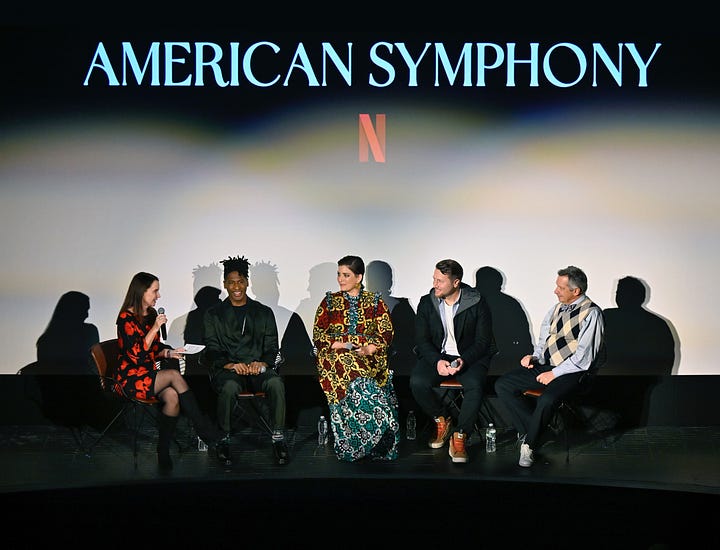
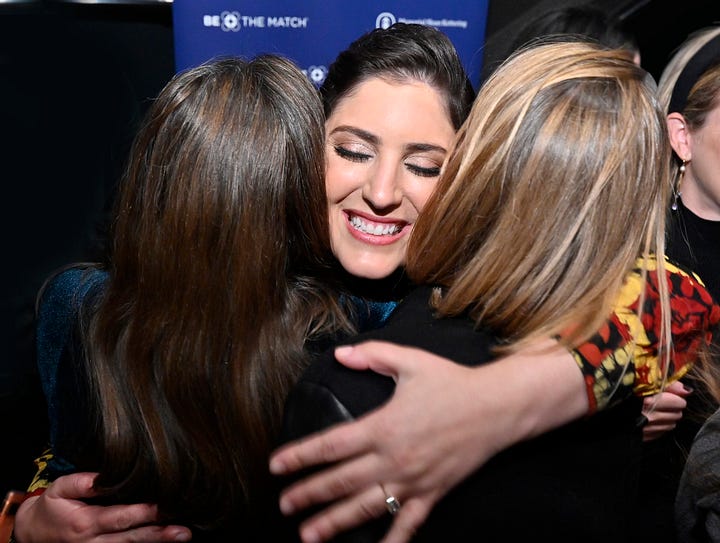
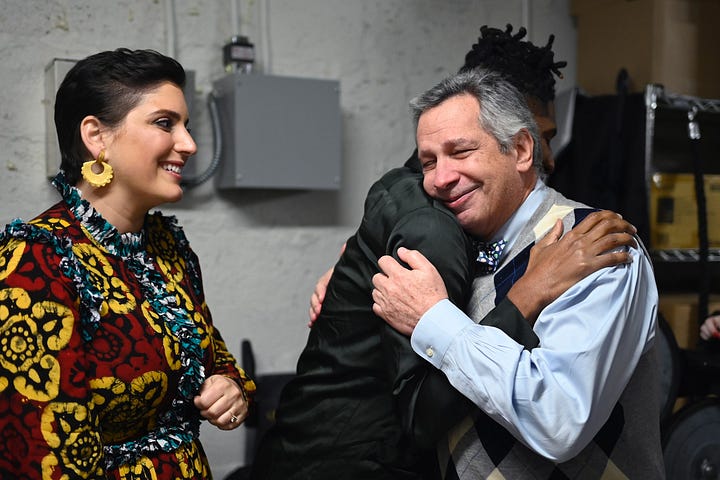
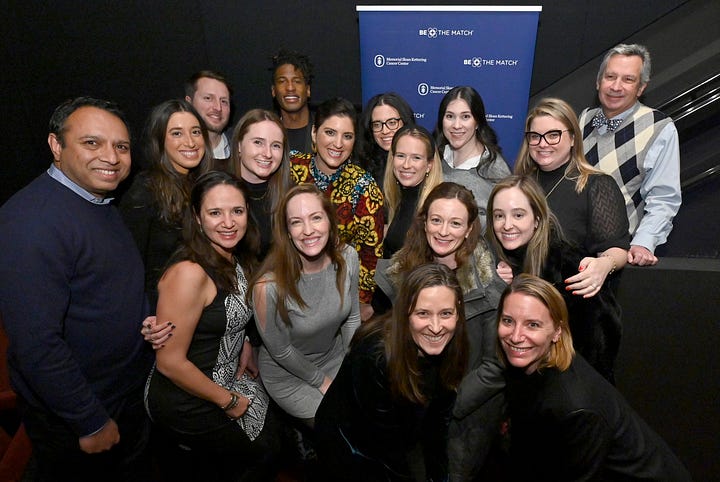
It was also meaningful from an advocacy perspective. That night, Sloan Kettering announced a new partnership with Be the Match called Join the Symphony. It’s a campaign to make the registry look like the orchestra in American Symphony—to reflect the beautifully diverse tapestry of these United States.
When I decided to take part in this documentary, my hope was that it might help others who are also facing great uncertainty. But as someone who has had two bone marrow transplants, I’ve also made it part of my mission to help expand and diversify the bone marrow registry. Currently the registry is marked by huge racial disparities: whereas a white person has a 79% chance of finding a match, a Black person has only a 29% chance, and statistics for people of mixed ethnicity like me are even lower.
My doctors did search the registry for a non-relative match this time, fearing that if my brother Adam was my donor again, I’d be more likely to relapse—but there wasn’t one. I’m fortunate that Adam was willing and able to donate again and that so far, the leukemia is at bay. But I’ve known too many people whose hope for a cure ended when they couldn’t find a match. And it’s with them in mind that I’m asking you to spread the word—to ask others to Join the Symphony.
And with that, I’d like to turn to today’s essay and prompt, which speaks to a different kind of healing. A few weeks ago, Jon and I had the honor of taking part in the “Healing through Music” concert series at my alma mater, Princeton University. That night, we talked about the many ways art sustains us through the hardest things, and I shared a story about Jon writing lullabies for me during my second bone marrow transplant. I often think of what Jon said in his Grammy acceptance speech a couple of years ago—about the special power of a song to reach people at a point in their lives when they need it most.
That’s what I wrote about, and what I’m inviting you to consider today.
Sending love,
Suleika
“When you find a match, from that moment on, there’s a light. There’s a chance. Cancer treatment is a brutal process, like salting the earth and hoping something can grow from that ruined soil. And my bone marrow, and maybe yours, could be that seed of hope.” —Adam Jaouad
Earlier this week, after a special advance screening of American Symphony for paid subscribers of the Isolation Journals, my husband Jon, the director Matt Heineman, and I answered the community’s questions, which were by far the most heartfelt and thoughtful ones I’ve received. They inspired the best conversation—find the video replay here!
We’ve scheduled our next meeting of the Hatch, our virtual creative hour for paid subscribers (aka, our favorite event of the month). It’s happening on Sunday, December 17th from 1-2 pm ET. Mark your calendar here!
Prompt 272. Lullabies by Suleika Jaouad
The winter of 2022, I lived a more intense version of isolation than I’d ever experienced. I was undergoing my second bone marrow transplant to treat a relapse of leukemia, and the chemo I had done to prepare for it had obliterated my immune system, leaving me with literally zero white blood cells. In such a circumstance, being sequestered in a hospital bubble is a given. However, my transplant occurred during the covid omicron surge, so hospital restrictions were higher than normal and visitors were extremely limited. Not only could I not leave the eighth floor of Memorial Sloan Kettering Cancer Center, but I also couldn’t see many of my beloveds.
For a period of time, this included my husband Jon. He had work obligations, and he could not avoid being exposed to all kinds of pathogens—from covid to the common cold—that could have killed me. That he continued to work was a choice we’d made together months earlier, back when we learned my leukemia returned. We had many discussions about whether he would pull out of his obligations to be with me, and I had insisted he continue. He had worked tirelessly from the time he was a teenager to get to that point, and the idea that he would miss out on this big moment because of my relapse was completely unacceptable to me.
Being apart was difficult for both of us, though in some ways, I believe it was even more difficult for Jon. He had to put on his professional face and move about the world when both his head and his heart wanted to be there at my bedside. But instead of wallowing in loneliness and despair, he came up with a creative solution. He connected a small keyboard to his computer, and he began composing lullabies and sending them to me. They were improvised, raw, and beautiful. (One of them evolved to become “Butterfly,” one of my favorite songs on World Music Radio—which, no big deal, was nominated for a Grammy for Song of the Year.)
Lullaby. It comes from the words “lull,” as in “to soothe,” and “by,” meaning “near.” Lullabies are often written in triple meter, which is a swaying or rocking rhythm that mimics what a baby feels in the womb as its mother moves. Jon’s melodies provided that sort of comfort, that sense of security. There was a week where I was in the most pain I’ve ever experienced, as close to the veil as I’ve ever been, suffering from three simultaneous infections—two in my bloodstream—and the whole time I played those gentle, mellifluous songs on loop, for hours and hours.
Hospitals are noisy places, with the constant beeping of monitors, the wheezing of respirators, the blaring alarms on IV poles. Jon’s songs were a welcome counterpoint to that soundtrack. But more than that, Jon found solace in the making of those lullabies, and I found so much in listening to them. I could feel his tenderness, his love, and his support. He wasn’t physically there, but he was present with me.
Your prompt for the week:
Write about a time music served as a healing force in your life or in the life of someone around you.
One more exciting piece of news!
We’ve partnered with the Princeton University Concerts series on their annual Creative Reactions and Audience Voices Writing Contests: the Impromptu Challenge. Together we’re inviting music lovers of all ages to reflect on their relationship to music through a series of journaling prompts. The Impromptu Challenge launches with today’s prompt and will be followed by two more—in early January and February 2024, related to topics on the 2023-24 Healing with Music series. You can learn more about the challenge and submit your work below!
If you’d like, you can post your response to today’s prompt in the comments section, in our Facebook group, or on Instagram by tagging @theisolationjournals. As a reminder, we love seeing your work inspired by the Isolation Journals, but to preserve this as a community space, we request no promotion of outside projects.
For more paid subscriber benefits, see—
American Symphony: A Conversation, where I spoke with my husband Jon Batiste and director Matt Heineman about “peak compartmentalization,” learning to say “I’m not okay,” and Matt’s covert ops at the Grammys
Studio Visit: Hospital Edition, where I give a behind-the-scenes tour of my hospital room turned painting studio
My Year of Love, a photo essay of what I thought was the worst year of my life but was in fact so much more

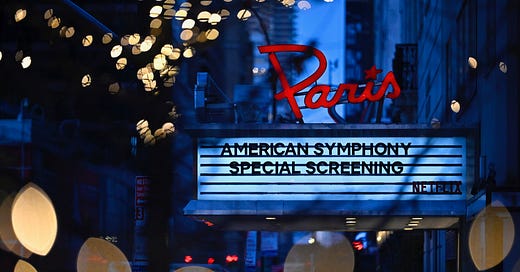







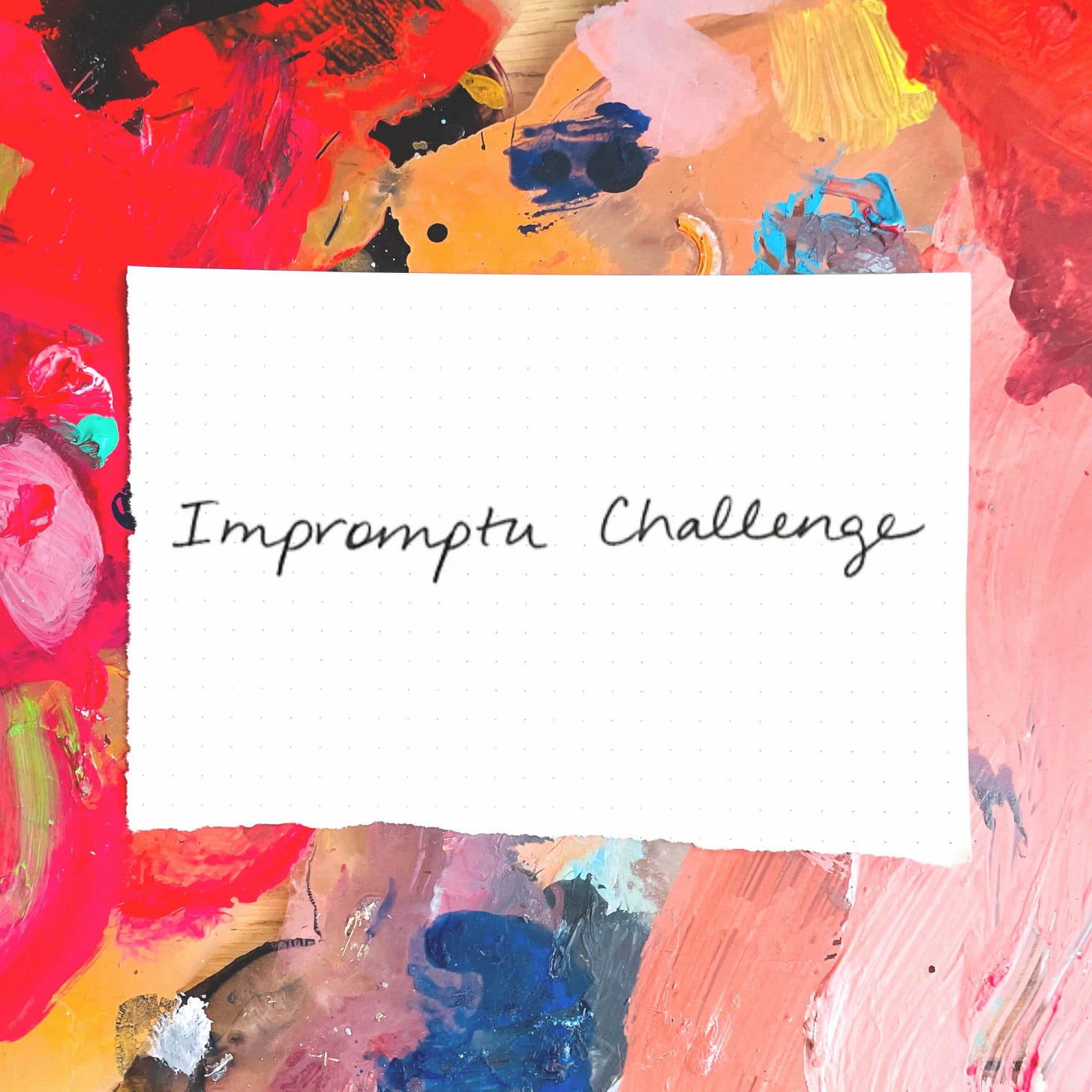


Lovely. As a disabled creative, the importance of creative expression as a form of healing is so essential. Creativity is so essential. I’ve been living with a very rare, progressive muscle wasting condition that has been leading me to complete immobility for over 20 years. I’m almost there. Creativity has intersected and sustained me in so many ways through this journey. People think illness or disability stops us from living and dreaming and creating... but it is because of my disability that I’ve been able to use creativity in ways I’ve never imagined. And live in ways I didn’t imagine. As an advocate for rare disease and disability for almost 16 years, and as an artist, I’ve found the two have merged so beautifully, and the stillness of my body has created mobility in my mind I never imagined. And it is because of this experience. No matter how difficult it has been, it has helped make me a whole person. I thank you for your writing and intimate shares and for your advocacy. i’m wishing you well. Xx
November 1997, rain lashes the windows and my mother lies in a 'coma' beside me in her care-home room. She has arrived at her last days, and is ostensibly unreachable - but her body is still restless.
The care-staff have left the room and, as so often, have left the radio on 'radio 2'. Mum has never cared for light music and I search the airwaves for something more to her taste.
Then I dig around in her bedside table drawer and unearth an old home-made cassette tape I made for her.
Ah, Mozart fills the room, our ears and our hearts. The sounds of rain now are soothing, the colours of the day soft. Mum relaxes in her sleep, and I kiss her gently goodbye...